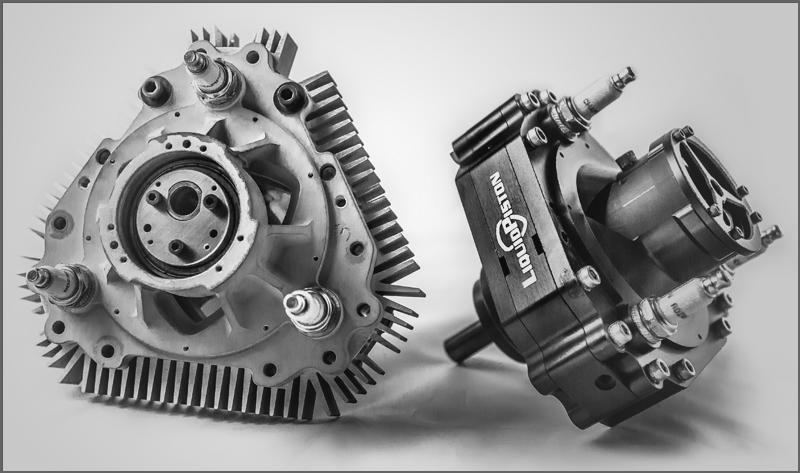LiquidPiston Engine Now Runs On Hydrogen Gas

The developer of a line of advanced rotary diesel and multi-fuel internal combustion engines is expanding into the renewable energy game. LiquidPiston's X-Engine, which we've covered previously and is helping the Air Force develop vertical takeoff and landing concepts, can now run on hydrogen gas.
The successful use of hydrogen gas to power the X-Engine, which is a rotary engine but is distinct from the Wankel engines that have developed something of a poor reputation in commercialized applications, demonstrates that renewable energy is a possible pathway forward with internal combustion power plants, particularly in aviation where favorable power-to-weight ratios are paramount.
But for its latest proof of concept the company stayed closer to the ground—much closer. To demonstrate the viability of hydrogen fuel powering the X-Engine, which has previously only been tested in the lab, the LiquidPiston team removed a go-kart's traditional 39-pound engine and replaced it with the 4.5 lb X-Engine, which you can see in the embedded video.
LiquidPiston's pitch for its rotary engine is that gasoline engines are inefficient, diesel engines are big and heavy, and electric power/batteries weigh a lot compared to what they produce. LiquidPiston's engines are 10x smaller and lighter than traditional diesel engines and increase efficiency by 30 percent. Interestingly, that efficiency and power-weight ratio makes these engines useful for generating onboard electricity to extend the capabilities of electric vehicles.
This is particularly useful for concepts like Urban Air Mobility, sometimes called flying cars. There are ambitious projects to put test vehicles in the sky over major urban centers in the U.S. and Europe within the next few years. UAM combines state of the art propulsion and battery technologies with advances in robotics, machine vision, and AI, and the result could be a fundamental rethinking of how we navigate in and around cities.
The problem is that electric vehicle technology, while offering advantages like noise reduction, have severe power density limitations compared to combustion engines. That's where a small internal combustion engine, if it can be made to run clean and efficient, could be a game changer. By generating onboard electricity, the power storage needs of such vehicles would be significantly reduced while extending range and power.
Hydrogen is the sixth fuel variation that has been shown to power the X-Engine along with gasoline, propane, kerosene, diesel, and jet A fuel.
Reassessing AI Investments: What The Correction In US Megacap Tech Stocks Signals
The recent correction in US megacap tech stocks, including giants like Nvidia, Tesla, Meta, and Alphabet, has sent rippl... Read more
AI Hype Meets Reality: Assessing The Impact Of Stock Declines On Future Tech Investments
Recent declines in the stock prices of major tech companies such as Nvidia, Tesla, Meta, and Alphabet have highlighted a... Read more
Technology Sector Fuels U.S. Economic Growth In Q2
The technology sector played a pivotal role in accelerating America's economic growth in the second quarter of 2024.The ... Read more
Tech Start-Ups Advised To Guard Against Foreign Investment Risks
The US National Counterintelligence and Security Center (NCSC) has advised American tech start-ups to be wary of foreign... Read more
Global IT Outage Threatens To Cost Insurers Billions
Largest disruption since 2017’s NotPetya malware attack highlights vulnerabilities.A recent global IT outage has cause... Read more
Global IT Outage Disrupts Airlines, Financial Services, And Media Groups
On Friday morning, a major IT outage caused widespread disruption across various sectors, including airlines, financial ... Read more

